My favourite Monteverdi moment...
David Vickers Monday, April 10, 2017
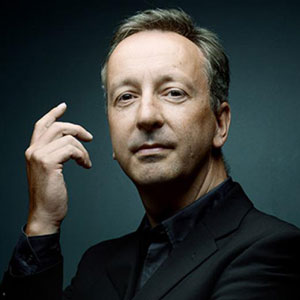
Paul Agnew (Les Arts Florissants)
I was only about 23 when I joined the Consort of Musicke, and it was like a family – I was encouraged and pushed forward, but in the softest and most helpful way. The very first project I did was the recording of the Sixth Book of Madrigals – which is one of the great books, and my first encounter with Lamento d’Arianna, La Sestina, and all those other incredible pieces. It was an amazing shock because the experience was so intellectually stimulating and musically intense. For me, the madrigals are Monteverdi’s workshop - that’s where he builds things and where you really begin to understand what an incredible genius he was. I’m also enormously fond of utterly beautiful little madrigals, such as ‘Baci care e soave’ from the First Book of Madrigals – which is just a lovely little epigram and nothing more – but I wouldn’t want to be without the Lamento d’Arianna because that relationship between the madrigal version and the lament from the otherwise lost opera is absolute proof that the five-part form is Monteverdi’s laboratory.
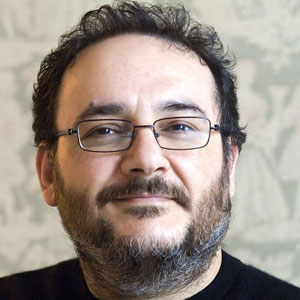
Rinaldo Alessandrini (Concerto Italiano)
The last closing section of ‘Non m'è grave il morire’ from the Second Book is so moving when the text describes a lady weeping, and the music uses the most beautiful falling harmonies to describe her tears. Another fantastic point is in La Sestina in the Sixth Book, the last phrase of the fifth section, “Ah, muse, qui sgorgate il pianto.” This is an incredible moment of really pure emotion. But maybe the most perfect example of theatrical balance and sound chemistry is ‘Hor che’l ciel e la terra’ because the music is not merely a decoration of Petrarch’s poetry but a real illustration of it. When the sonnet ends with the poet saying “tanto dalla salute mia son lunge” – ‘I am so far from the source of my well-being’ – it’s fantastic how the soprano and the bass line start from unison, walk through the complete range, stretching more and still more “far”, with the pulling of dissonance to the biggest possible gap before ending with that beautiful resolution!
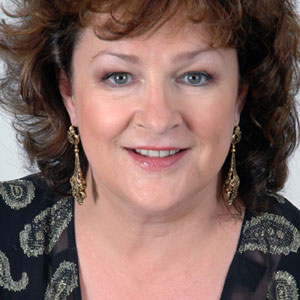
Catherine Bott (New London Consort)
My first discovery of Monteverdi came as a schoolgirl when I heard the opera that really launched the form as a human drama: L’incoronazione di Poppea. By the time I recorded the part of the goody-goody Drusilla for John Eliot Gardiner, I understood that huge chunks of this sensual piece weren’t by Monteverdi himself, including that famous and slightly creepy love duet – but it remains the work that turned me on to him. When the New London Consort came to record Orfeo for L’Oiseau-Lyre it was a special experience. Peter Wadland was a genius producer, and it was a real feat of imagination to turn Walthamstow Town Hall into an Arcadian grove: my over-riding memory is the exquisite, unforced fluidity of John-Mark Ainsley’s singing in the title-role. But the Monteverdi music that gets me every time is the moment in the Vespers when three become one in the concerto ‘Duo Seraphim’ when the solo tenors sing the line “et hi tres unum sunt”. It’s spiritual and musical perfection.
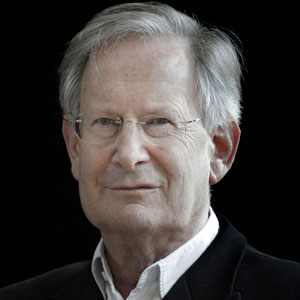
John Eliot Gardiner (The Monteverdi Choir)
My parents took me along to the Bryanston Summer School when I was only seven or eight years old, and I couldn’t even sight-read very well at that point. William Glock came armed with the Malipiero edition of the collected works that had just arrived in the BBC Library, and shelled out copies of madrigal books to Imogen Holst and Nadia Boulanger. I recall hearing the most wonderful extraordinary music. And then we had the records Nadia Boulanger made of Monteverdi, which we played again and again and again at home. And then there was a broadcast of the Vespers on BBC Third Programme from York Minster, conducted by Walter Goehr with the LSO and the Huddersfield Choral Society and Uncle Tom Cobley and all. Things like these obviously made a big impression on me. I don’t think he ever surpassed the Mantuan Vespers, but I’ve most recently became fascinated with Il ritorno d’Ulisse in patria; it’s a prodigious work and I’m completely in love with it! In so many ways it’s Shakespearean in its contrast of Town versus Country – it is very much a contest between decadent urban values pitted against rural organic values, summed up by the clash between the faithful shepherd Eumete and the gluttonous parasite Iro. As we can see in several Shakespeare plays, it’s quite clear that Ulisse underlines the truthfulness and integrity of the rural values – not the pastoral in the sense that bergerie takes over in eighteenth-century France, but in a much more like the Forest of Arden.

Robert Hollingworth (I Fagiolini)
The Prologue from Orfeo is just the best way to talk about music; it’s the most condensed piece of music I know – it’s like a sort of chef’s distilled jus that started with three pints and by the time he finishes he’s just got a little thimbleful. That is the brilliance of his writing in that prologue – it’s a series of four variations over a bassline that has got every inflection, every turn that you can devise. There’s a danger with early music that it becomes a repository for nice-sounding stuff – you could almost rename the early music movement ‘the nice music movement’, and certainly in England we’re very good at making a nice noise, and not always so great at thinking about the words. So when I Fagiolini did John La Bouchardière’s production The Full Monteverdi it was significant that there was nowhere to hide – there were probably many flaws in the project’s performances, but one thing that happened every night without fail was that the singers meant every word, which meant there was an emotional honesty and a visceral nature in the singers meaning every word.
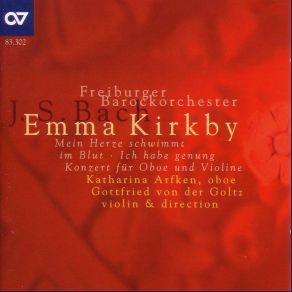
Emma Kirkby (Consort of Musicke and The Taverner Consort, Choir and Players)
‘Ave Maris Stella’ from the 1610 Vespers is so perfect and so moving to perform because of all the variety possible within it. The way we did it in The Taverner Consort meant there were all the solo individual contributions from wonderful colleagues such as Nigel Rogers and Emily van Evera, beautiful instrumental interludes and then the collectiveness when suddenly everyone joins together; the balance of elements is so beautiful. In the same way, the other bit in the Vespers that I love is the ecstatic choral “Omnes” at the end of ‘Audi coelum’. In Monteverdi it’s always very interesting to explore the interface between sacred and secular. There’s not this difference between secular nonsense and religious profundity – you get both together all the time in Italy in that period. During the daytime you could get straight eroticism from the Song of Songs in church, and then in the evening you could get absolutely serious godly music set to secular words in the chamber. Also, if you want to, you can put hugely different interpretations into a madrigal. There was a total difference between our take on ‘Ohimè, se tanto amate’ from Book 4, which we did in the Consort of Musicke as a sort of naughty joke really, and I Fagiolini’s bitter emotional agony and tragedy in their brilliant film The Full Monteverdi – and I think it can be both!
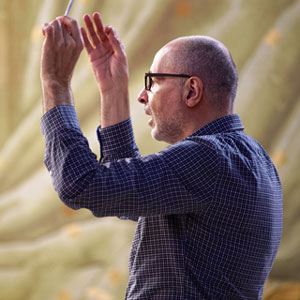
Giuseppe Maletto (La Venexiana and La Compagnia del Madrigale)
Two works by Monteverdi have always moved me in a special way. The Second Book of Madrigals is a perfect collection that combines great skill, youthful freshness and joy for life. In each madrigal the music not only deeply adheres to the text, but enriches and sublimates it. You would not believe that this is the work of a twenty year old composer. I’d single out ‘Ecco mormorar l’onde’; after the part where the music describes the sunrise and the awakening of nature, the last sentence in its simplicity becomes a universal message of love that transcends even the inspired poetry of Tasso. The second work that I’m particularly fond of is undoubtedly the Vespers, and not only for musical reasons. For me, the Vespers is a mystery and a miracle; the most original musical creation that exists. It is so unique and different from anything that was ever been written before and or that came afterwards, even Monteverdi’s own Venetian church music. In the Vespers there isn’t one single moment that’s not extraordinary at arousing endless emotions.
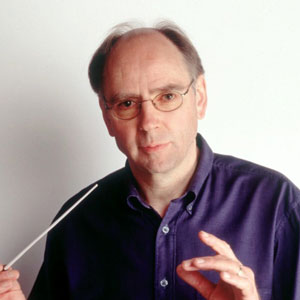
Andrew Parrott (The Taverner Consort, Choir and Players)
When I heard Nikolaus Harnoncourt’s recording of the Vespers I zeroed in on Nigel Rogers’ contribution, and also the Dutch tenor Marius van Altena – who had a nice, light voice and fluid musicality. They were really the only two people at that time who could do what was needed in the solo tenor parts. Nigel Rogers had a way of expressing this wonderful exuberance and embroidered florid music in a way that seemed right, and his ability to sing fast notes lightly, instead of the customary heavy-handed way most tenors had back then. In fact, when I was a postgraduate at Oxford I started to get asked to sing as a tenor in performances of the Vespers, and on one occasion I said “I’m not going to do it unless you get Nigel Rogers” – and they did! When I came to make my own recording of the Vespers it was an obvious idea to ask him to sing ‘Nigra sum’. He sang it differently in every take, changing his ornaments according to how he felt each time, and they always sounded improvised but all done with a purpose – not just as if filling in a few extra notes in a clichéd way. It’s hard to pick just one example of Monteverdi’s music that’s special, but a powerful example of what makes him different from anyone else is when Orfeo loses Euridice forever towards end of Act IV. Early on in Orfeo all the colours of the instruments and exciting rich music looks after itself fairly easily, but at this point of Orpheus’s desolation Monteverdi dares to reduce it to practically nothing. Everything is stripped back, and it’s very bleak; the musical simplicity is just devastating. It’s the less-is-more principle.
Richard Wistreich (Red Byrd and Monteverdi scholar)
I’ve got lots of Monteverdi goosebump moments, and two of them are from the Vespers. I will never forget singing ‘Ave maris stella’ when I was in the choir at King’s College, Cambridge; that was my very first encounter with Monteverdi’s music, and we did one of very earliest recordings of the Vespers to be made in Britain. The outcome now sounds horrendous to me with lots of things you wouldn’t have anymore, like big-voiced soloists singing in nineteenth-century style voices and David Munrow playing the recorder all the way through it. But it was an amazing encounter, and to this day whenever I hear those first four chords of ‘Ave maris stella’ it always brings a tear to my eye. I don’t know why – it’s just so touching. I just think the way the harmony unfolds is extraordinary, and yet it’s Monteverdi at his simplest. And the other example from the Vespers is the Sonata sopra Santa Maria. When I took part in the Vespers project with Andrew Parrott and the Taverners it wasn’t a recording – leading up to the sessions there had been a lot of thinking, concerts, then re-doing it again with different forces, and so on. One of the great things that Andrew did was to bring Bruce Dickey to Britain for the first time, and it was a total revelation to hear the cornetto played in that way. Back in those days instrumentalists were utterly terrified every time they got to the Sonata sopra Sancta Maria in a performance – a bit like how an orchestra might’ve felt about playing The Rite of Spring in the 20s! In the recording sessions I wasn’t singing so I just listened – and suddenly experienced this thrilling sensation at hearing all the changes of tempo judged perfectly and all of the chords from the violins, cornetti and trombones being perfectly in tune!
Anthony Rooley (The Consort of Musicke)
When I listen to the very first title on the first Monteverdi recording we did (‘Madrigali erotici’ in 1981), I am still stunned at the power and truth of ‘Con che soavità’ for soprano, strings and continuo. Emma Kirkby sings with her inspiring ‘innocence’ – maybe a little too innocent for our worldlier ears today, but with truthfulness of heart, with strings accompanying as though they too had words! In the mid-80s, we were asked to be resident artists for a new festival devoted to the memory of Luca Marenzio – held at his birth-place, Coccaglio (near Brescia). We were asked to provide the central concert and also to preside as judges for an annual competition for the best emerging vocal ensembles. The first ones to win this event were English! (I Fagiolini – who went on to create their own successes). Later certain Italian singers, some who were involved in La Venexiana in its first days, took the prize – so this Marenzio remembrance did much to invigorate awareness of Italian madrigals. This repertoire demands immense care in preparation – after all this is highly advanced ensemble work, close to what we associate with string-quartet performances – but when I listen to some of our earliest Monteverdi recordings I wonder if something a little more relaxed would be welcome. When we recorded the Sixth Book of Madrigals at Forde Abbey in 1989 we were inspired by Monteverdi’s choice to create an extraordinary five-part madrigal version of his famous solo Lamento d’Arianna – this is surely one of the high-points of Monteverdi’s entire output, and there’s very little in the entire repertory that exceeds its power.

No hay comentarios:
Publicar un comentario